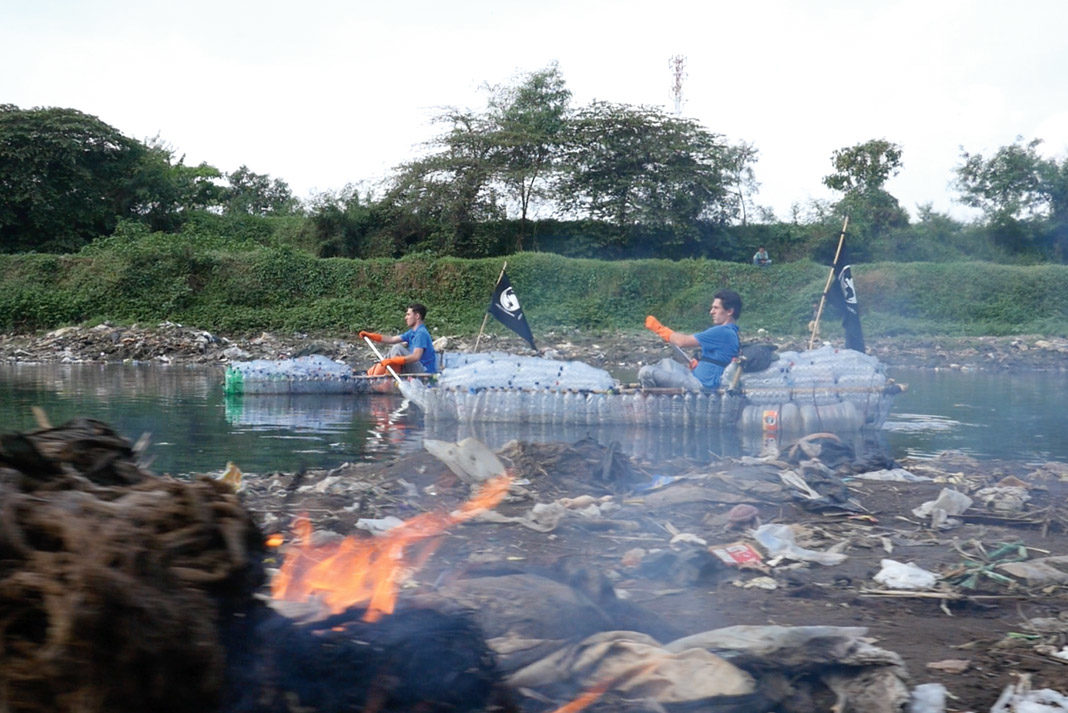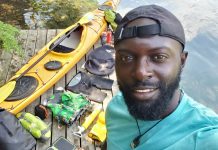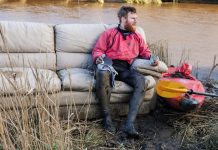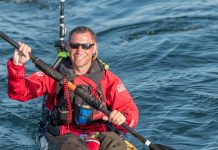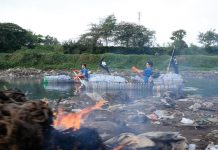When Bali-raised brother Gary and Sam Bencheghibs decided to paddle one of Indonesia’s longest rivers, they weren’t trying to break a record.
Instead, they were setting out to better understand how millions of people live alongside one of the world’s most polluted waterways. In July 2017, the Bencheghibs launched their homemade kayaks—constructed from used water bottles—onto Java’s 270-kilometer-long Citarum River.
Neither were experienced kayakers, but this wasn’t their first unusual expedition. Only a year earlier, they’d floated down the Mississippi on a raft made of trash, recording their experiences for their media company, Make a Change World. As 23-year-old Gary explains, nothing could have prepared them for what they were about to encounter.
What was the biggest challenge?
About 15 million people live around the Citraum River and depend on it. We started from Majalaya, which is the Indonesian capital of textile manufacturing. A lot of industries dump their waste directly into the river and don’t have water filtration, so there’s a lot of toxic waste.
We didn’t expect to see so much plastic concentrated in one river. We were breathing in sulphur. There were dead animals—dogs, cats, pigs, rats, birds, fish—and open fires every 100 meters from burning trash. Early on, there was so much trash, we’d get stuck. We’d have to physically pull ourselves through and over trash. We wore protective clothing, boots and gloves and avoided contact with the toxic water.
Why build your own kayaks?
We liked the idea anybody can build a plastic bottle kayak. Trash can have a second life and what is polluting the river can be transformed into a resource.
My first design failed so we collaborated with expert bamboo crafters from Bali who helped with the design of the structure. Our kayaks were built from bamboo and 300 bottles, collected by students and volunteers from waste banks. We used recycled motorbike tires to tie the bamboo, and recycled fishnets to hold the kayaks together.
Where are your kayaks now?
People along the river were fascinated by the idea of floating on trash. We started working with some villagers along the way to show them how to make their own kayaks. Now, one of the villages is using our kayaks and has made three more to clean up the river. It’s really cool to see our kayaks having a second life after the expedition.
When did you realize your trip was a success?
For Indonesia, it was shaming to see two expats going down the river. Instead of shaming and blaming, we wanted to focus on the positive—how do we solve problems and get individuals working towards the same goal of making the world green. We wanted to show locals initiatives fighting day and night to preserve the environment.
Some of our content went viral—with over 3.5 million views—and two weeks after we finished our expedition, the Indonesian government wanted to see us to deliver a response. The Indonesian president has since announced a seven-year rehabilitation program for the river.
Who inspires you?
A river is so interesting because from upstream to downstream, you’re meeting all these people connected by one body of water. Getting their perspectives is always fascinating. Really engaging with the communities is so powerful.
It’s incredible there’s life in the Citarum; people use the water for drinking, fishing and bathing. For my brother and me, it’s astonishing how polluted the river is, yet at the same time, life still manages to find a way.
Each kayak was built with 300 water bottles, was nine feet long, weighed 70 pounds and took four days to build. | Feature photo: Gary Bencheghib



